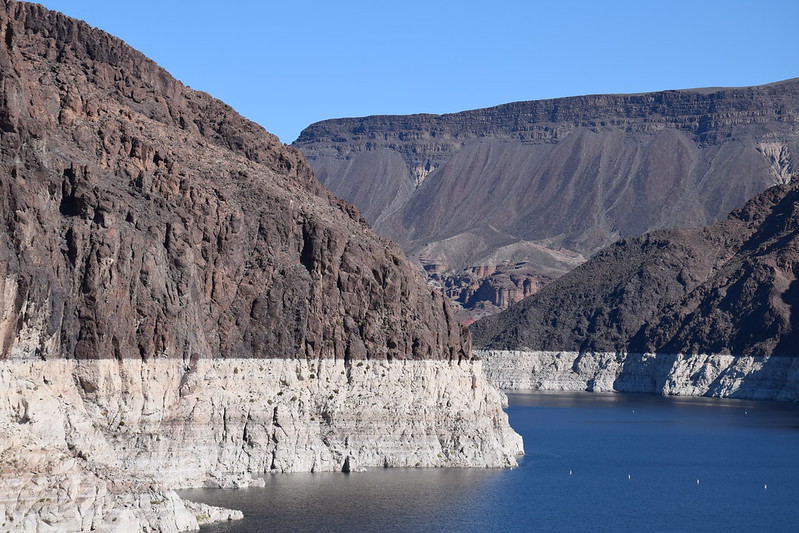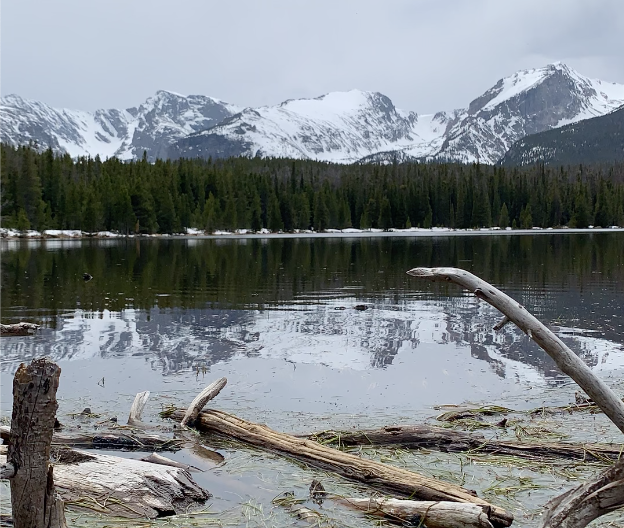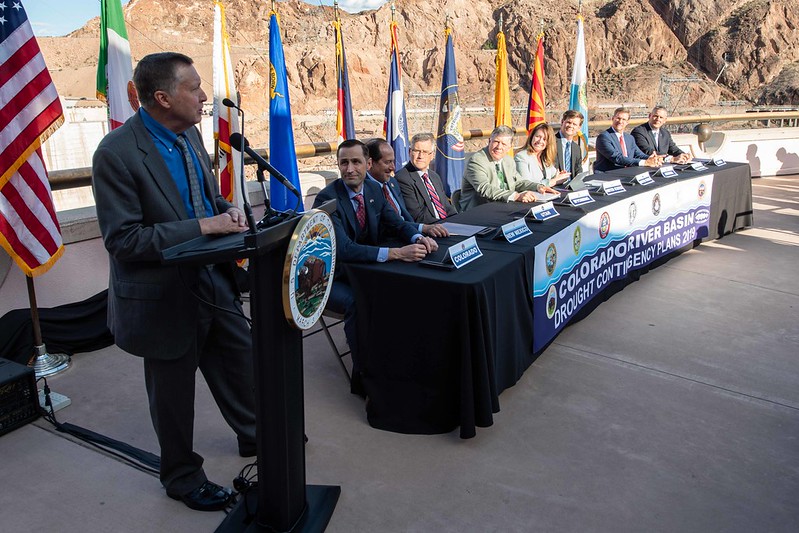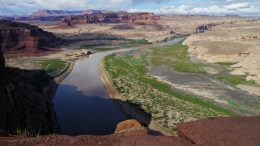After nearly two decades of declining water flows into the Colorado River Basin, scientists have decided the word drought doesn’t cut it anymore. We need different terms, they say, to help people fully grasp what has happened and the long-term implications of climate change — not just in the Southwest, but across the country.
The term that’s caught the most attention lately is “megadrought.”
It’s not a new word, but it’s one that’s come sharply into focus in recent months, following a study published this April in the journal Science that found the North American Southwest has experienced an abnormally severe drought over the past two decades — its second driest stretch in 1,200 years.
Archaeological evidence has linked previous decades-long megadroughts to several historical societal collapses, including the Mayan civilization and Kublai Khan’s Yuan dynasty in China.
Let that sink in a minute if you need to.
The researchers, led by A. Park Williams of the Lamont-Doherty Earth Observatory of Columbia University, say this prolonged megadrought — which reached from Oregon and Idaho down to northern Mexico — would likely have been just a bad drought if not for climate change. The increase in temperatures from our burning of fossil fuels supercharged naturally varying conditions, creating one of the worst megadroughts in human history.
“The new study provided a nice basis to what many of us have felt now for a number of years,” says Brad Udall, a senior water and climate research scientist at Colorado State University, who was not involved in the research. “The basin has really entered a fundamentally different period than what we experienced during the 20th century.”

That may not come as a surprise to those who have noticed that the Colorado River’s biggest reservoirs, Lake Mead and Lake Powell, are now sitting half-empty.
But linking modern reality to the megadroughts of history is something new — and researchers say this and other changes to our language matter for the future.
Hot Drought
The current megadrought in the Southwest is defined not so much by declining precipitation — although that did have an effect too — but by increasing temperatures from climate change. That’s going to continue to climb as long as we keep burning greenhouse gases.
Udall and Jonathan Overpeck, dean of the School for Environment and Sustainability at the University of Michigan, have spent more than a decade studying the effect of this warming on the Colorado River, a crucial water source in the West. The river irrigates 5 million acres of farmland, provides water to 40 million people in seven states — including in the West’s biggest cities like Los Angeles, Phoenix and Denver — and helps keep the lights on in the “city of lights,” among other towns.
This exploitation has come at an ecological cost, though. Thanks to diversions for our various human uses, the river now runs dry before it reaches the sea. More water rights have been allotted than nature can provide, which is undoubtedly a management issue (although a complex one to solve), but in the last two decades this is being more acutely felt.
In part that’s because less water is running off into the basin.
Udall and Overpeck found in a 2017 study published in Water Resources Research that Colorado River flows between 2000 and 2014 were 19% below normal. Reduced rainfall was partially responsible. But on average, they found, about one-third of the runoff decline resulted from warming temperatures from human-caused climate change.

Higher temperatures from this “hot drought,” as it’s also called, means more evaporation from water bodies and soil, more evapotranspiration from plants and more sublimation from snow. For the West, where water resources are stretched thin already, this can have far-reaching economic and ecological consequences.
Which brings us to another proposed change in the way we describe things.
In a 2018 paper the Colorado River Research Group, which includes Udall and Overpeck, called for new language to describe the scientific reality on the ground. The term “drought,” they wrote, wasn’t accurate.
“Aridification,” they argued, was a more fitting description.
The semantics here are important.
Aridification, they explained, “describes a period of transition to an increasingly water scarce environment — an evolving new baseline around which future extreme events (droughts and floods) will occur.”
Or more simply: Drought is temporary. Aridification is permanent.
This reinforces the fact that climate change isn’t a distant phenomenon, but one that’s already underway and causing life-altering changes. Depending on where you live, it’s causing more severe floods, destructive hurricanes, prolonged droughts or lengthened fire seasons.
And it’s here to stay, given our current course. The “new normal” of climate change could, like megadroughts, be felt for decades.
“We’ve been wanting to make the case that this is not a normal drought,” says Udall. “A drought implies that some kind of return to normalcy will occur in the near future, and that’s not what we’ve seen and not what the science tells us is likely to happen.”
Aridification Creep
This isn’t a problem contained to just the Colorado River basin or the Southwest, either.
Warmer summer temperatures are likely to reduce flows in other key western rivers, including the Columbia River in the Pacific Northwest, and rivers across California’s Sierra Nevada, other research has shown. And warming temperatures are driving similar changes further east, too.
A new study in the Proceedings of the National Academy of Sciences examined flows in the Missouri River, the country’s longest river, which cuts through the Midwest. The researchers, led by USGS scientist Justin Martin, found that during the first decade of the 2000s the Upper Missouri River Basin had drought conditions “unmatched over the last 1,200 years.”
The culprit? Warming temperatures from climate change that reduced runoff from snowfall in Rocky Mountain headwater streams that feed the Missouri.
Same story, different river.
But while that paper did occasionally use the term “megadrought,” it mostly characterized what’s happening in the Missouri as a “severe drought.”
Framing the problem in that manner, some say, may not be enough to convey the seriousness of the situation or to inspire action from water managers and the public.
To change the narrative, we have to change the framing, Udall and Overpeck argue in a new commentary published in the Proceedings of the National Academy of Sciences, in response to the Missouri River study. Thinking of what’s happening on the Missouri, and other rivers across the West, as a drought, they wrote, ignores the real and long-term effect that warming temperatures will have on our rivers.
“This translates into an increasingly arid Southwest and West, with progressively lower river flows, drier landscapes, higher forest mortality, and more severe and widespread wildfires,” they wrote, “not year on year, but instead a clear longer-term trend toward greater aridification, a trend that only climate action can stop.”
And that gets to about the only good news in any of the recent research. We know what’s causing the problem. We just need to do something about it.
A first step is making sure changes in water-management policy reflect scientific reality, and that’s where using language for planning that matches the task at hand becomes crucial.

Water managers traditionally use the past as a guide by examining the hydrologic record to calculate important baselines for the average high and low flows, the size of possible floods and the length of probable droughts.
But that’s all changing now “because the future is no longer going to look like the past,” says Eric Kuhn, the former general manager of the Colorado River Water Conservation District and coauthor of the book Science Be Damned: How Ignoring Inconvenient Science Drained the Colorado River. Now, he says, “water managers are trying to move forward in what we call ‘deep uncertainty’” — a process that requires planning for any number of plausible futures, including a very dry one.
We will get a chance to see what this looks like at the basin-scale as a seven-year process to renegotiate how the Colorado River is shared among its many uses is now underway.
Whether those at the table take to heart the scientific findings about the prognosis for “aridification” and “megadrought” will have big ramifications on the future ecological, economic and political health of the Colorado River basin.
Outside the basin the larger work continues as well.
“The sooner emissions of greenhouse gases to the atmosphere are eliminated,” Udall and Overpeck concluded, “the sooner the aridification of North America will stop getting worse.”
![]()



3 thoughts on “‘Megadrought’ and ‘Aridification’ — Understanding the New Language of a Warming World”
Comments are closed.